Main menu
Common skin conditions

NEWS
Join DermNet PRO
Read more
Quick links
Black henna tattoo reaction — extra information
Black henna tattoo reaction
Author: Dr Delwyn Dyall-Smith FACD, Dermatologist, Australia in 2011. Updated by Dr Ebtisam Elghblawi, Dermatologist, Tripoli, Libya. November 2019.
Introduction - henna
Introduction - black henna tattoo
Introduction - black henna tattoo reaction
Demographics
Clinical features
Diagnosis
Treatment
Avoidance
What is henna?
Henna is a flowering plant that has been used since medieval times to stain skin, hair, and fingernails a light brown colour due to its active ingredient naphtha-quinone.
Henna is used to celebrate various occasions such as weddings in Hindu and Middle Eastern cultures in India, Pakistan, Sudan, Libya and many other countries.
Temporary paint-on tattoos do not involve needles and usually fade after 3 weeks.
What is a black henna tattoo?
To make them temporary henna tattoos look more like a real tattoo, para-phenylenediamine (PPD) is added to make ‘black henna’.
The procedure is also called pseudo-tattooing.

Red henna temporary tattoo
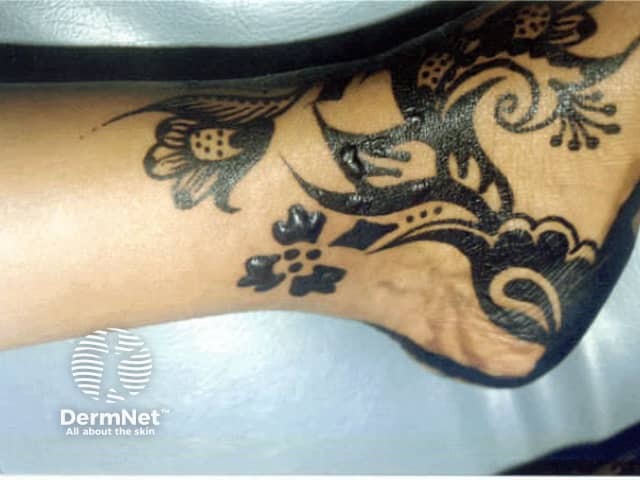
Black henna temporary tattoo
What is a black henna tattoo reaction?
Black henna tattoo reaction is a form of allergic contact dermatitis to PPD.
Natural pure henna does not cause allergic reactions. Nor do other possible additives such as vinegar, olive oil, coal and cloves.
Who gets a black henna tattoo reaction and why?
Henna tattoo reactions have mostly been reported to affect tourists visiting the Middle East or South East Asia, especially Bali, Morocco, Turkey and Egypt. Reports are also now appearing from tattoos applied in Europe and the USA. Temporary paint-on ‘tattoos’ have usually been applied by transient street artists.
Both children and adults can be affected.
Slow acetylators are more prone to developing the allergy than fast acetylators.
The concentration of PPD in black henna has been found to exceed the regulated levels in most countries. Often kerosene or petrol is also added to improve the uptake of the colour. This seems to increase the risk of sensitisation and may cause irritant reactions.
PPD is also present in hair dyes and dark clothing dyes and is used in the rubber industry. Sensitisation can develop with exposure to any of these and once it has occurred reactions may then appear with other sources including chemicals with a similar structure such as azo dyes, parabens, para-aminobenzoic acid and para compounds. Cases have been reported where the initial sensitisation occurred with a hair dye and a rapid and severe reaction then developed to the paint-on tattoo. Others have been sensitised by the tattoo and have later reacted to hair dyes, clothing dyes and a marker pen. Intoxication with PPD has been reported to rarely result in systemic adverse effects including acute renal failure, rhabdomyolysis and multiple organ failure.
What are the clinical features of a black henna tattoo reaction?
The contact allergic reaction usually appears in the pattern of the tattoo 7–14 days after first exposure. In someone already sensitised to PPD due to earlier exposure to the chemical, the reaction develops within 48 hours.
- Black henna dermatitis usually presents as an acute eczematous reaction with erythema, severe itching and a burning sensation, oedema, vesicles and oozing.
- The morphology may also be lichenoid (scaly), pustular or blistering.
- The rash may generalise, extending well beyond the initial tattoo pattern.
- Urticaria, angioedema and anaphylaxis may rarely occur.
- An erythema multiforme-like rash has been reported as has localised hypertrichosis.
The reaction slowly resolves but can leave either increased pigmentation or a white outline of the original tattoo. Keloid scarring has been reported.
Black henna tattoo reactions
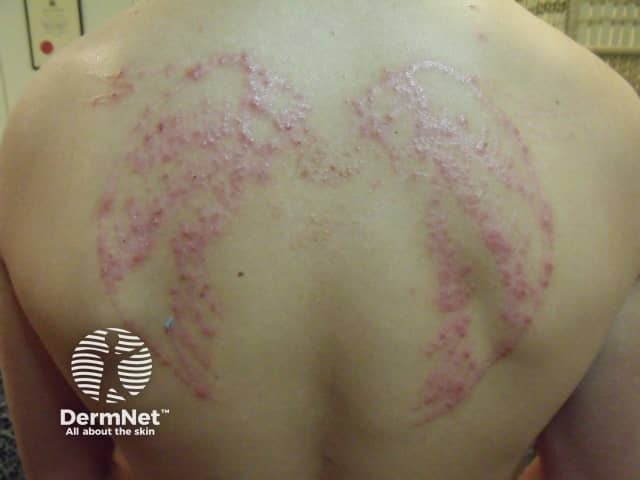
Dermatitis
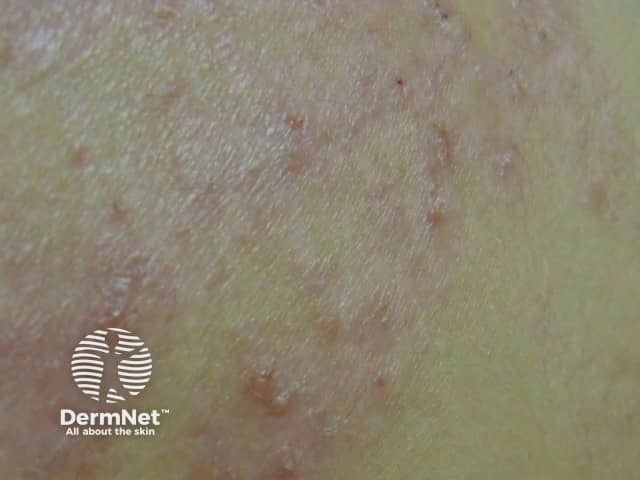
Pustular reaction

White mark 2 weeks' later
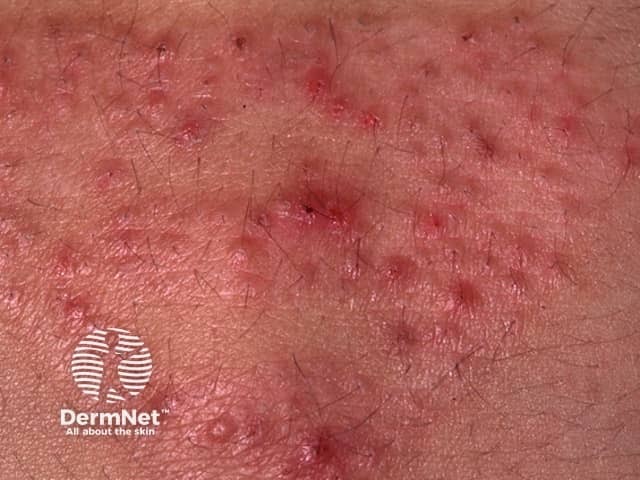
Dermatitis
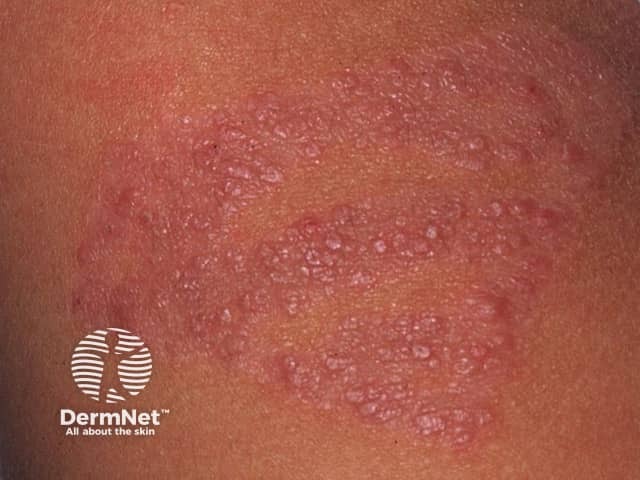
Papular reaction
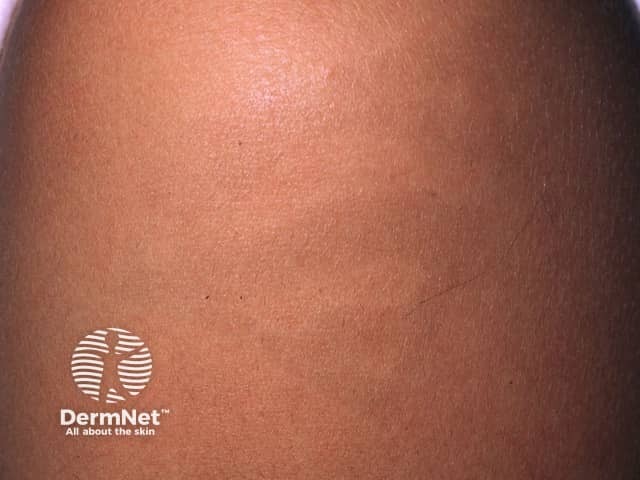
Pigmentation 2 weeks' later
How is a black henna tattoo reaction diagnosed?
The diagnosis of black henna tattoo reaction is usually made on the history and clinical appearance.
- Patch testing can be performed with PPD to confirm the allergen.
- Swabs for bacteriology taken from pustules may grow Staph. aureus although biopsies do not demonstrate the bacteria.
Henna reaction (above) was followed by allergy to hair dye
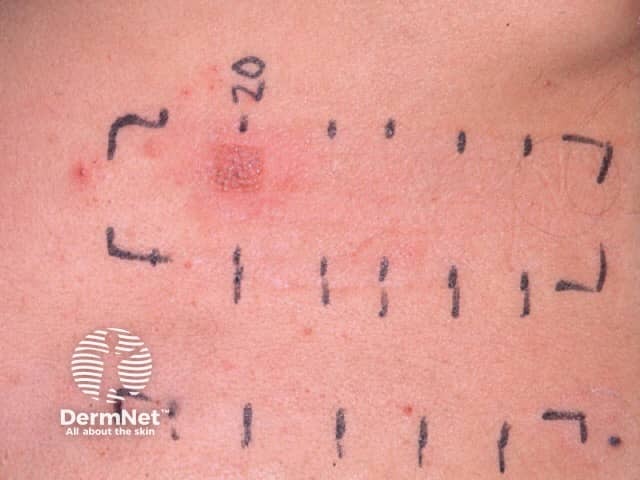
Positive patch test to PPD
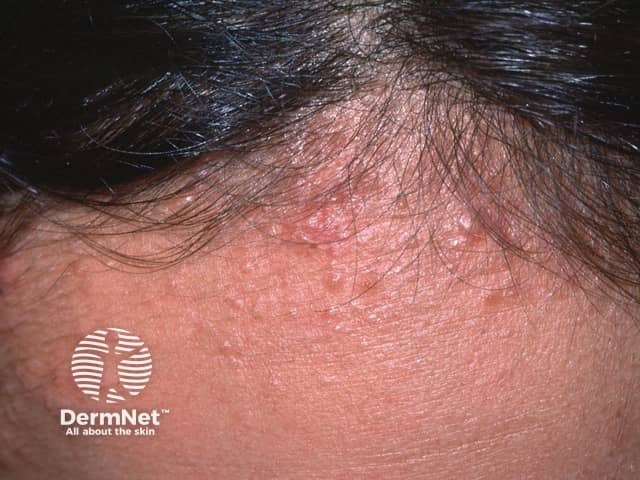
Hair dye reaction

Hair dye reaction
What is the treatment for a black henna tattoo reaction?
Treatment generally involves the use of topical corticosteroids.
- Sometimes oral corticosteroids are required for generalised rash.
- Antibiotics may be prescribed for the pustular form, although the pustules may be sterile and continue to extend despite the antibiotic.
- Antihistamines may be prescribed to reduce the itch, especially in the presence of urticaria.
Avoiding black henna tattoo reaction
Minimise the risk of subsequent exposure to other sources of PPD (particularly permanent hair dye) and chemically related compounds once sensitisation has occurred.
We recommend avoiding exposure to temporary paint-on black henna tattoos, because of the high risk of sensitisation.
References
- Gonzalo-Garijo MA, Fernández-Durán DA, Pérez- Calderón R, Sánchez -Carvajal J. Allergic contact dermatitis due to a temporary henna tattoo, a hair dye, and a marker pen. J Investig Allergol Clin Immunol 2008; 18: 226–7. PubMed
- Le Coz CJ, Lefebvre C, Keller F, Grosshans E. Allergic contact dermatitis caused by skin painting (pseudotattooing) with black henna, a mixture of henna and p-phenylenediamine and its derivatives. Arch Dermatol 2000; 136: 1515–7. PubMed
- Mohamed M, Nixon R. Severe allergic contact dermatitis induced by paraphenylenediamine in paint-on temporary ‘tattoos’. Australas J Dermatol 2000; 41: 168–171. PubMed
- Saunders H, O’Brien T, Nixon R. Textile dye allergic contact dermatitis following paraphenylenediamine sensitization from a temporary tattoo. Australas J Dermatol 2004; 45: 229–31. PubMed
On DermNet
Other websites
- Cutaneous reactions to temporary tattoos — Dermatology Online Journal 2003
- Temporary Tattoos and Henna/Mehndi — FDA 2001 updated 2006
